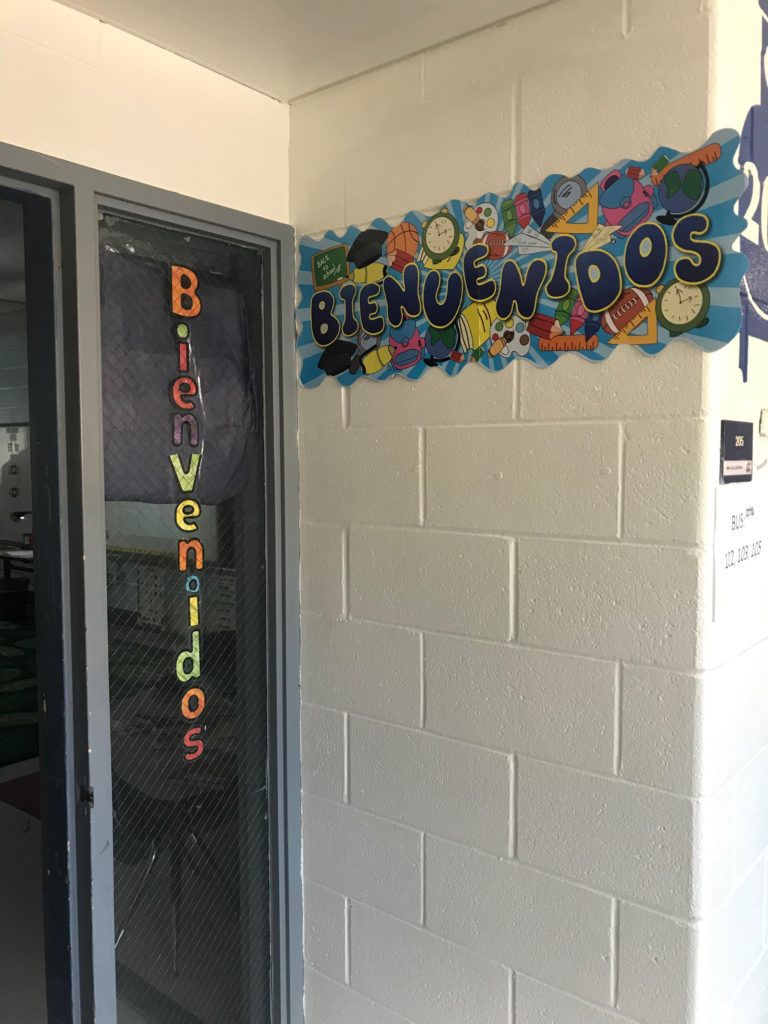Why ACPS Should Extend the Dual Language Program into Middle and High School
Grace Hart and Maddie Kysilko
Many students in ACPS have been taking Spanish since entering elementary school as a part of the Dual Language program. Offered at both Mount Vernon Community School and John Adams Elementary School, this Spanish-immersion program is lost once students move to middle school.
Dual Language aims to do more than just teach students Spanish. The program also provides an opportunity for students who attend these elementary schools, where around half of students are from Spanish-speaking homes, to learn English.
Dual Language aims to aid conversational skills in Spanish while still maintaining an academic baseline. This ensures that students are comfortable with the language, but can also use the correct vocabulary and grammar.

Other information on the Alexandria City Public Schools (ACPS) Dual Language website cites research claiming the learning benefits of the Dual Language program. For many Dual Language students now in high school, they experienced math and science courses taught in Spanish, and language arts and social studies courses taught in English.
“With processing language, you have a tendency to apply sounds to objects,” Alejandra Salazar-Salame, a Dual Language teacher at Mount Vernon Community School, explained. “When you apply names to inanimate objects, your brain makes multiple receptors, making it more flexible. If you apply this to other subjects like math, you are able to see multiple relationships a lot faster.”
“Multiple studies have shown that being a polyglot [or multilingual] improves cognitive functions. Polyglots also have an increased opportunity to expand their cultural and social sphere due to their ability to communicate with people in their preferred language,” said Salazar-Salame. “By participating in a Dual Language program, students can become polyglots themselves and reap the benefits of all of the aforementioned bonuses.”
In these Dual Language schools, students who are in the Talented and Gifted (TAG) program have a seperate teacher for math and language arts. However, there is only one bilingual TAG math teacher at Mount Vernon, and none at John Adams. Because of this, students in the Dual Language program and TAG do not receive the same Spanish immersion that non-TAG students receive.
The Dual Language immersion program does not continue into middle school. Most students who take Spanish language classes as an elective take Spanish 1A, Spanish 1B, and Spanish 2 throughout middle school. Dual Language students take Dual Language A, B, and C. These middle school Dual Language classes differ from those in elementary school, though, because they are like traditional Spanish classes with grammar and vocabulary, not learning other subjects over a long school day period.
Upon entering high school, Dual Language students are encouraged to take Advanced Dual Language, while other Spanish students take Spanish 3. Sophomore year, almost all Spanish students take Honors Spanish 4, no matter what level of Spanish they took before.
Some students feel as if they are in different places academically in Honors Spanish 4. Junior Lindsey Schulwolf, who was enrolled in Mount Vernon Community School’s Dual Language program, said, ”I feel like [Advanced Dual Language students] were a bit more proficient than everyone else, and I did find myself helping out [non-Dual Language students] with basic grammar.” Schulwolf also said that despite this, she found the program helpful and was glad she was a Dual Language student.
Salazar-Salame said, “I absolutely think the Dual Language program should extend into middle and high school, especially if the same model applied in Dual Language elementary schools were to be applied to middle and high schools.” This would mean that math and science classes would be taught bilingually, and that Dual Language students could continue on the path they started on.


